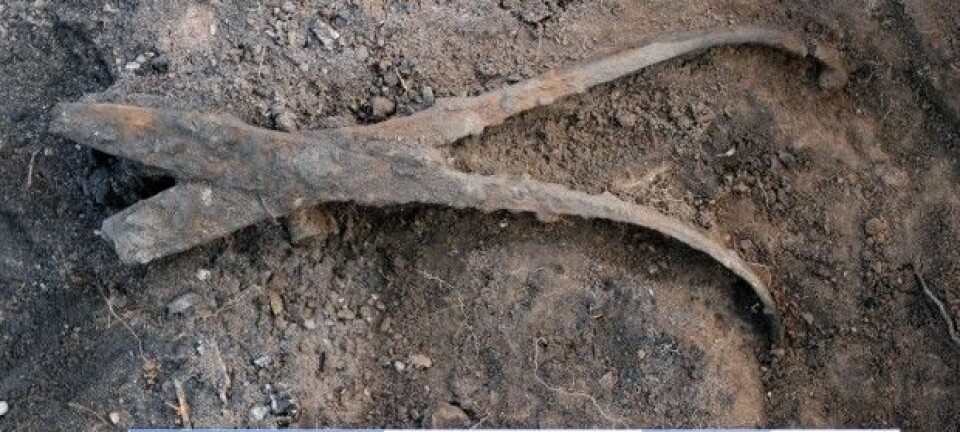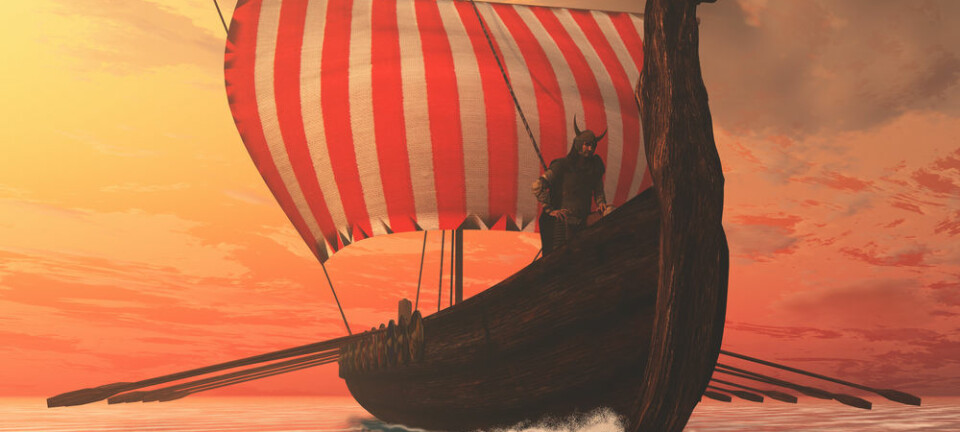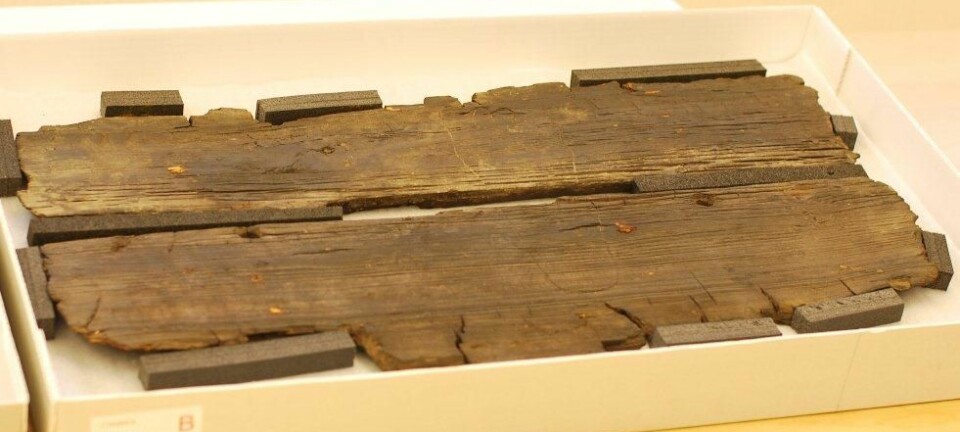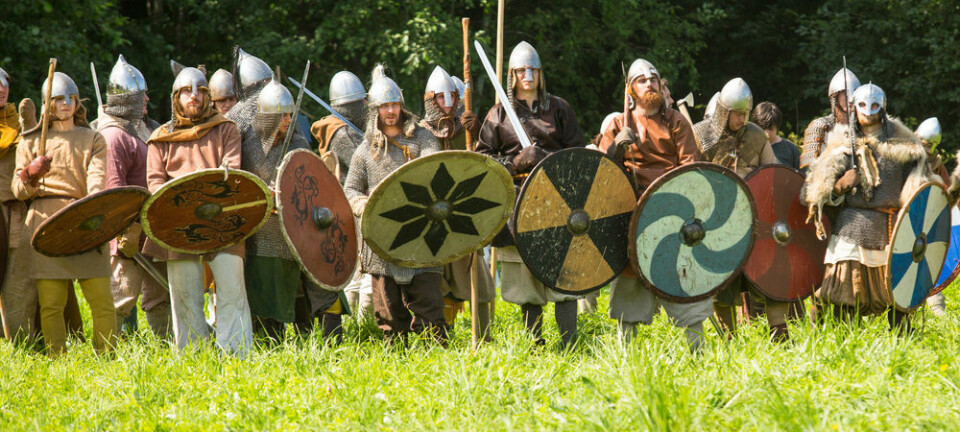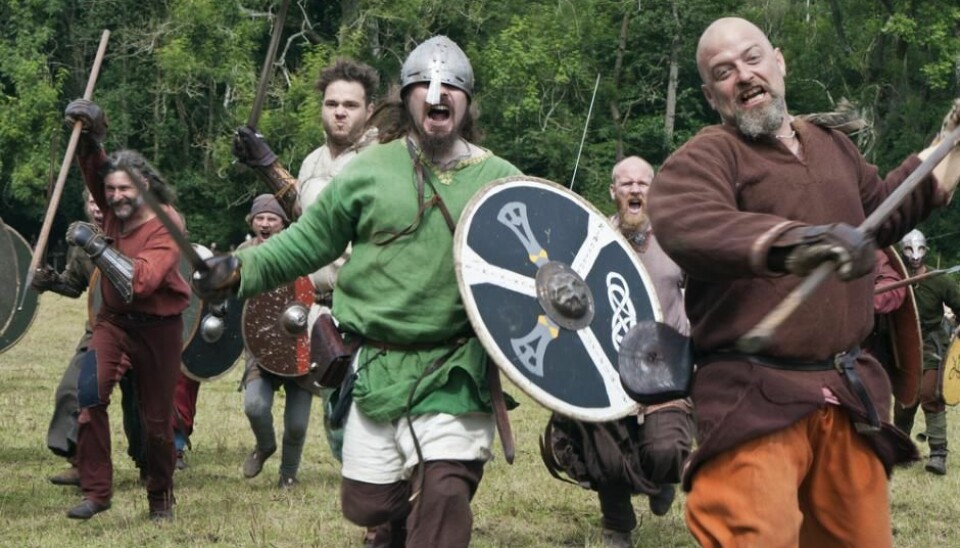
The Viking Age should be called the Steel Age
OPINION: The Viking Age harks back to the glory days of the Nordics, but the name is all wrong. It should instead be called the Steel Age, says Danish archaeologist.
The Stone Age, the Bronze Age, and the Iron Age… All follow the most widely recognised method of categorising historical cultural development.
It was Christian Jürgensen Thomsen who developed the three term system at the start of the 19th century and in doing so, created order out of a chaotic pre-Christian chronology in the Nordics.
One hundred years later, one of his students, J. J. A. Worsaae, placed the Viking Age in between the Iron Age and the Middle Ages.
The Viking Age however, was not a methodical tool, but an intermediate period of time between the other two--a political manifestation from 1864.
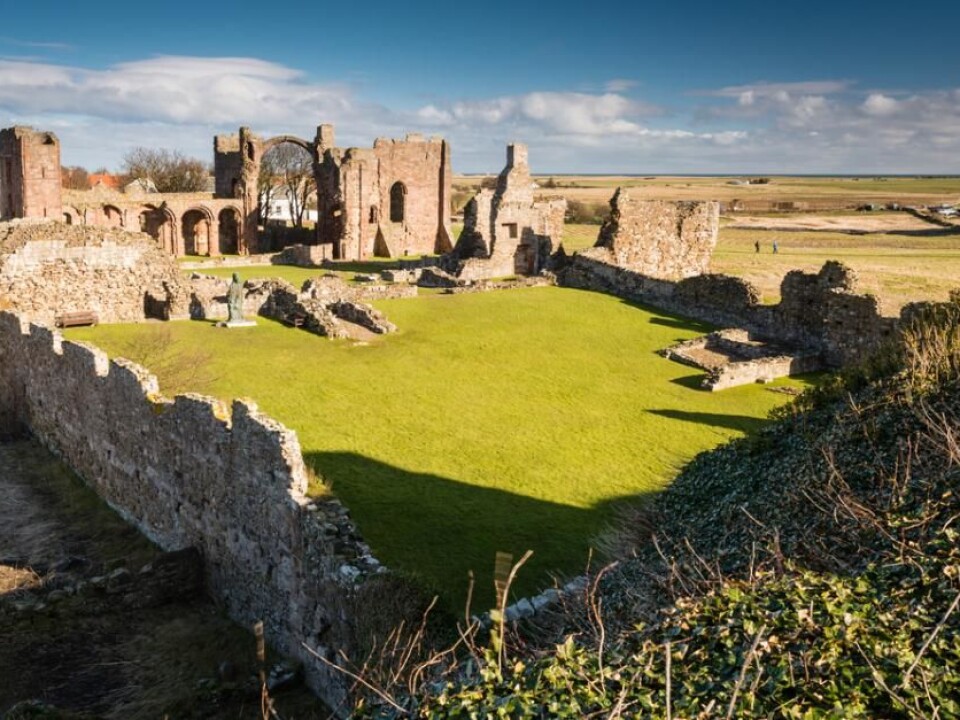
Back then, Danes embraced the nostalgia of the Viking Age heyday. And they still do today.
The Viking Age teases archaeologists
We still celebrate the Vikings with Viking markets, games, and festivals, and it has become quite an economically lucrative slice of the tourism industry.
Perhaps the Viking Age appeals to us today, because it is perceived as a time in which Denmark, as we know it today, took shape, with borders, written language, cities, a monetary economy, and the spread of Christianity.
So when it comes to the Viking Age, archaeologists are biased in a completely different way than if it was one of the three preceding ages. The very word Viking gets in the way.

Generally speaking, all Danes know about the Vikings and the Viking Age, but on an academic level, it is difficult to penetrate deeper into the period. And archaeologists often find it difficult to answer even relatively simple questions about the Vikings.
Plundering, conquest, and colonisation
A historian would immediately say that the Viking Age began with the looting of the monastery on Lindisfarne in 793 CE and ended with the Battle of Stamford Bridge in 1066. But archaeologists ask how cultural development in Denmark can be defined by events in the British Isles, and whether activities outside Scandinavia had any significance for the cultural-historical development of Scandinavia.
All would agree that looting, conquests, and colonisation were important to the people who actively participated in it, and to the powerful elite who organised and profited from it.
But were the Viking raids important for the population as a whole or to ordinary farmers?
Or more precisely: can we separate plundering in the 800, 900 and early 1000s from plundering in other periods? Or were they just a continuation of a certain practice with improved technology?
The Vikings: marauding warriors
Worsaae created the concept of the Viking Age from the noun “Viking” which can be derived from a variety of words:
It could have arisen from the Latin “vicus” as used in the trading centres during the 700s, which the Vikings loved to raid. Another suggestion is that it developed from “vik,” meaning a bay--perhaps because Viking ships would lay in wait in the “vik.” Or perhaps because Vikings ran their ships ashore in the “vik.”
A third suggestion is that it comes from the Old Norwegian “vigja”, which means “to kill” or “to murder,” and was made famous in a popular Nordic folk ballad.
Regardless of which explanation is correct, the Viking Age Scandinavians did not call themselves Vikings. And the word does not appear in contemporaneous written accounts in specific reference to Scandinavians, but more broadly to marauding warriors of any nationality.
The Vikings were ethnically diverse
And here is one of the basic problems that archaeologists have with the concept of the Viking Age: unlike the Stone Age, Bronze Age, and Iron Age, the Viking Age refers explicitly to Scandinavia as an ethnically and culturally homogeneous society.
But research shows just the opposite--that Scandinavia was populated by people who were highly diverse in their ethnic and cultural background.
The young men excavated from the cemetery at Trelleborg Viking fortress in Denmark grew up in many different places in Europe. Six out of 37 of the skeletons discovered, came from outside Scandinavia.
When exactly did the Viking Age begin?
Another problem is that there is no break in the material culture between the Iron Age and Viking Age.
Houses, farms, and villages changed continuously, and both still used entombment graves and cremation.
Jewellery, weapons, and tools changed, but without any major breaks or transitions that could justify a new chronological boundary.
Archaeologists simply find it difficult to determine when the Viking Age begins.
The Steel Age replaces the Iron Age
Perhaps a new, more usable description based on a defined period from domestic archaeological material would help.
One suggestion might be to go back to using Thomsen's definition of the Iron Age, or to perhaps introduce the 'Sailing Age' in reference to the innovation that not only drove raiding, but was the primary prerequisite for trade and mobility.
But the Iron Age is long and complex, and the sails are not preserved.
'Steel Age' is a good alternative, as it is coherent with respect to the Iron Age while also indicative of something new and technologically innovative.
Iron Ore from bogs revolutionised the weapons industry
From the beginning of the Iron Age, around the year 500 BCE and well into the Middle Ages, iron in Denmark was made of bog iron ore.
Iron was reasonably pure and only contained phosphorus and carbon. Bog iron ore was solid, from the time it was dug up, until it reached the blacksmith's anvil. Tools and weapons were made by welding one piece of iron to another.
It is still possible to analyse each individual piece of iron ore in an object and measure the carbon content.
By the end of the 700s, blacksmiths had had more than a thousand years of experience working with bog iron ore and Denmark began to systematically use iron with a carbon content of around 0.8 percent.
The steel material could be as hard as modern steel tools, and it must have made weapons much more efficient.
The steel was used to make double-edged sword blades that were forged in three layers--a layer of steel with a layer of iron on each side. It was the optimal blade that could wear out and be ground into infinity. This same structure is still used in some modern knives.
Thousands of these knives must have been forged every year, and the technology was not limited to the major Danish towns like Hedeby, Ribe, and Birka. Even in the smallest towns, farmers had a knife with a steel belt. But by the 1000s the trend was over.
Perhaps the steel was reserved for other tasks or certain forges. In any case, there was suddenly a big change in the way that ordinary people used steel.
Steel should lend its name to the period
Thomas’ idea to characterise the period according to the material that was developed and introduced, is a spacious and functional tool.
Placing the Steel Age between the Iron Age and the Middle Ages, makes it possible to study the period without bias and in reference to the archaeological material discovered in Scandinavia.
Exactly as we do for the Stone Age, the Bronze Age, and the Iron Age.
---------------
Read the Danish version of this article on Videnskab.dk
Translated by: Catherine Jex
